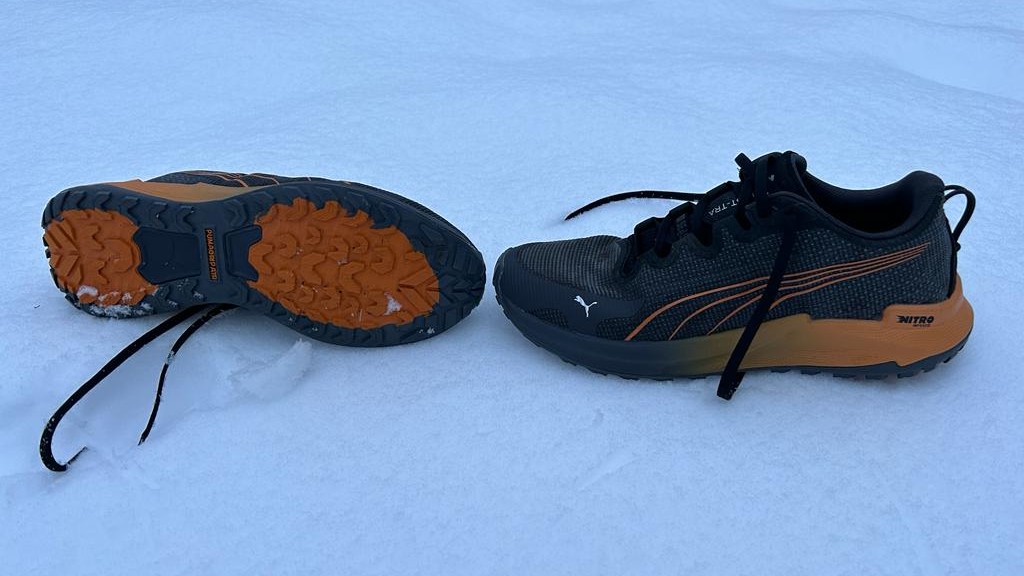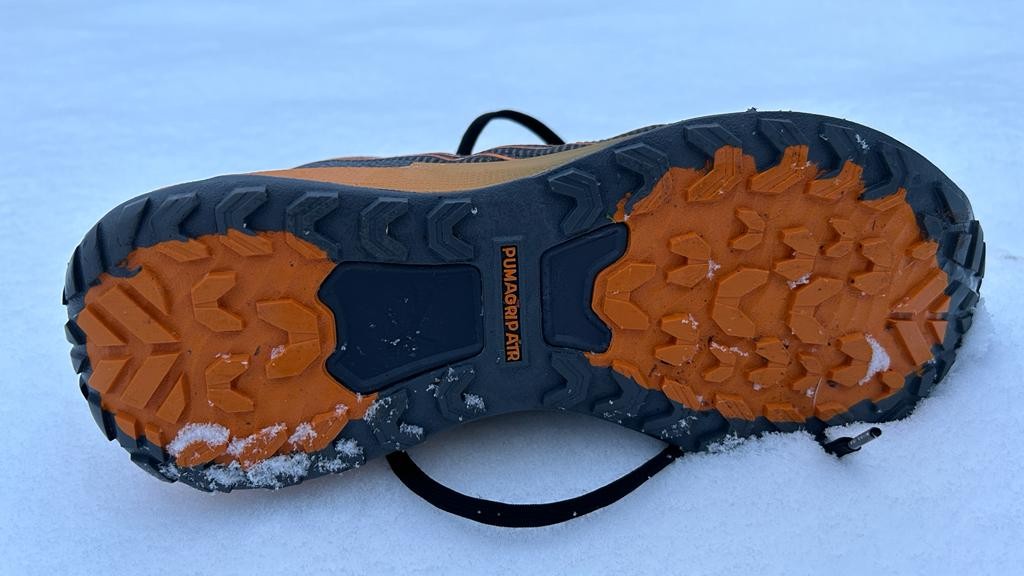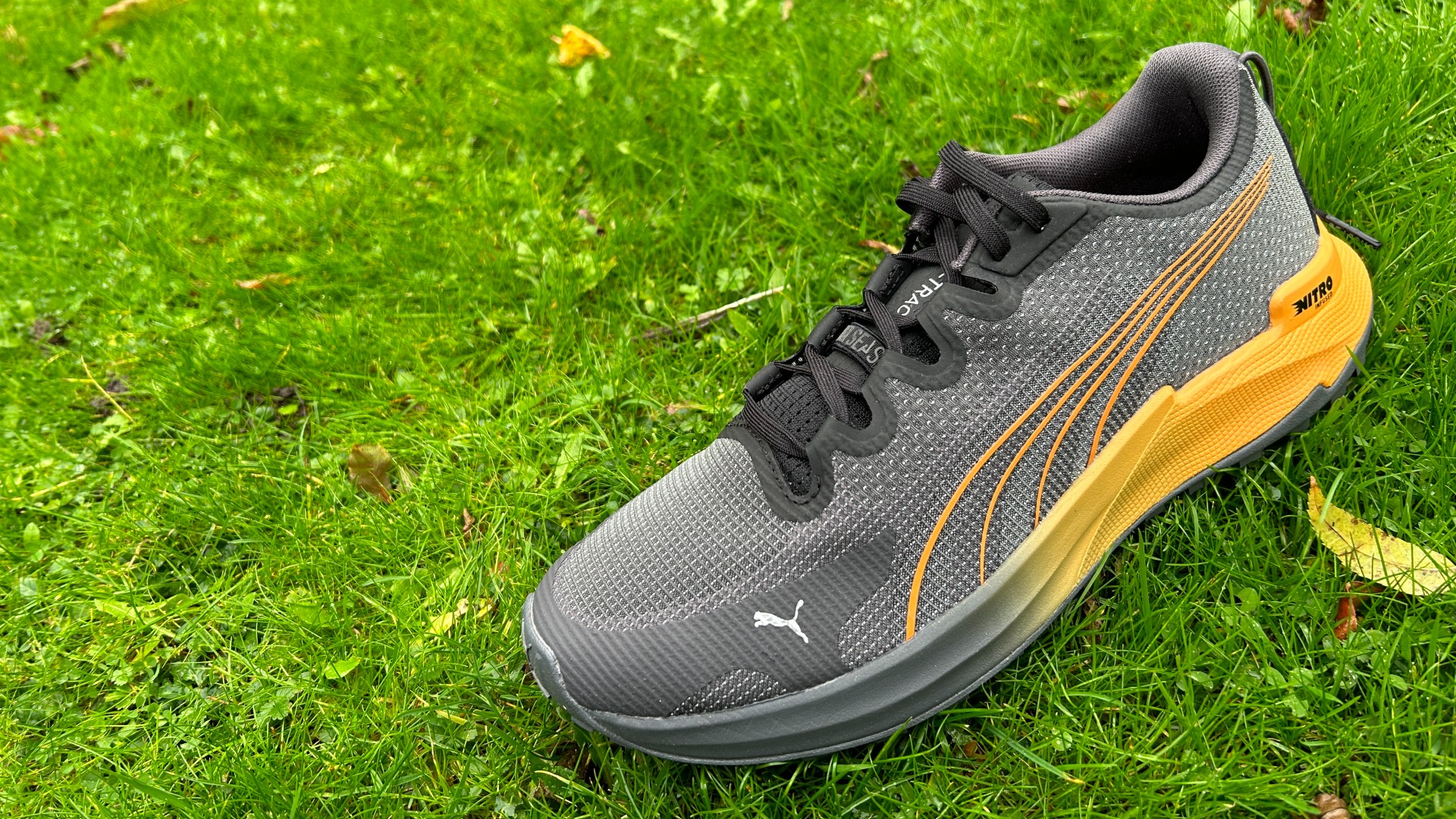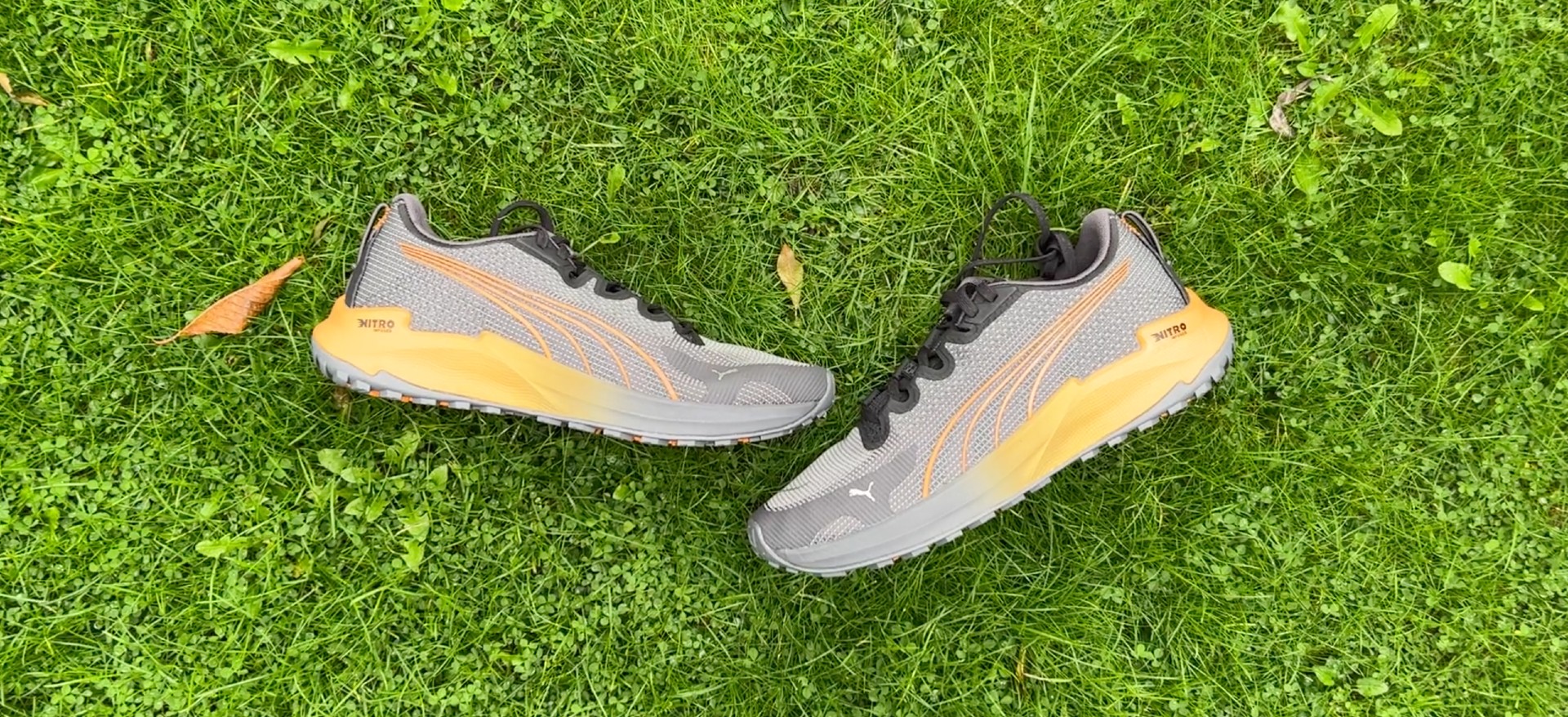Our Verdict
The Puma Fast-Trac Nitro is a useful shoe to own, working well for runs at a range of paces on the road and light-to-moderate trails. It’s also great value, making it one that most runners who use a shoe rotation should consider adding to their stable.
For
- Outsole grips well on road and trail
- Light enough for faster runs
- Cheaper than rivals
Against
- Not the most comfortable on road
- Mud sticks in outsole
You can trust Coach
The Puma Fast-Trac Nitro is an all-terrain running shoe that offers reliable grip both on the road and off it. It’s lighter than most shoes in its category and the dual-layer midsole delivers a versatile ride that makes the Fast-Trac enjoyable to use at a range of paces.
It doesn’t excel in any one area, and there are road-to-trail shoes that are more comfortable on hard surfaces, but the Fast-Trac is a very useful shoe to have in your arsenal during the winter in particular. It’s one of the best trail-running shoes I’ve tested this year, and it’s good value too, especially since Puma’s shoes are often included in sales.
Puma Fast-Trac Nitro: Price And Availability
The Puma Fast-Trac Nitro is available now and has an RRP of $110/£100.
Design And Fit

The Fast-Trac Nitro shares many common design features with the excellent Puma Velocity Nitro 2 road running shoe, but small changes to the upper, midsole and outsole make it more suitable for off-road use.
Like the Velocity Nitro 2, the Fast-Trac Nitro has a dual-layer midsole, which combines Puma’s nitrogen-infused Nitro foam with a lightweight EVA foam called ProFoamLite. The balance tilts towards more EVA foam in the Fast-Trac Nitro though, with a top layer of Nitro embedded in the ProFoamLite, which delivers a more stable, firmer ride.
The upper of the Fast-Trac Nitro is made from a ripstop mesh and has a toe bumper to protect your feet on the trails. The collar is also quite firm to add more support and stability around the heel on uneven ground.
As you’d expect, the Fast-Trac Nitro also has a more aggressively lugged outsole than the Velocity Nitro 2 road shoe. It uses PumaGrip ATR, a more trail-ready version of Puma’s excellent PumaGrip outsole rubber that also improves its ability to grip wet or slushy pavements.
Sign up for workout ideas, training advice, reviews of the latest gear and more.
The Fast-Trac Nitro has a heel-to-toe drop of 8mm, with a stack height of 29mm at the heel and 21mm at the forefoot. It fit me well in my normal size, with a pretty roomy toe box – I could wear two sets of socks in it on a snowy day – but it wasn’t too loose either. It’s also pretty light for a road-to-trail shoe at 10oz/284g in my UK size 9.
How I Tested This Shoe

I have run 45km in the Puma Fast-Trac Nitro, testing it across a range of terrains including canal towpaths, light forest trails, muddy single-track paths and on the road. I also took it out in the snow for a road-to-trail run, and have tried running at a mix of paces in the shoe including easy and tempo runs, plus some strides.
Running Performance
I recently slipped and fell while using trail shoes on wet pavements on the way back from a forest, so I’ve been choosing my shoes carefully to match the late autumn/early winter conditions. Thankfully, I’ve tested many of Puma’s road shoes and the grip has always been excellent, so a more trail-ready shoe that can also handle slick, leaf-strewn pavements sounded ideal.
The Fast-Trac Nitro lived up to my expectations. I have tested it on a range of light trails as well as the roads to and from them, and it’s found purchase at all times. This includes even quite deep mud in the forest, though the Fast-Trac does pick up a lot of mud in between its lugs and doesn’t shed it as fast as full trail shoes like the Saucony Peregrine 12. This will reduce how well it grips over the course of a run on soft ground, but if you’re just running through a patch of mud before getting back to harder ground, it’s fine.

I also used the Fast-Trac Nitro for a run after a heavy snowfall, ploughing through fresh, deep snow as well as running on slushy pavements. The grip remained reliable, even when jogging up a snowy slope hardened to ice by enthusiastic sledders. I stuck to slow speeds, and taking turns was a bit dicey at times, but you don’t need to shy away from a little snow if you have the Fast-Trac Nitro on.
I expected the Fast-Trac Nitro to deliver on grip, but I didn’t anticipate how well it would perform at faster speeds. It’s light for a trail shoe and only a little heavier than Puma road shoes like the Velocity Nitro 2 and Deviate Nitro 2, and while the midsole isn’t as soft and bouncy as on those shoes, the Fast-Trac Nitro feels responsive when you speed up. If you’re looking for a versatile daily trainer and stick to the trails even when heading out for a tempo run, the Fast-Trac Nitro is a great option.
One area where I did prefer other road-to-trail shoes, like the Inov-8 Parkclaw G 280 and Nike Pegasus Trail 4, is for longer runs only on the road. The Fast-Trac Nitro has a fairly firm ride when you’re on the road and while it’s not uncomfortable, if your balance of road and trail tilts more towards the asphalt, it might be worth considering a more cushioned shoe.
Is The Puma Fast-Trac Nitro Worth It?

The Fast-Trac Nitro is an excellent running shoe and more versatile than most, and any runner who owns a selection of running shoes and rotates them according to the type of run they have planned should look at it given its low price. It’s not the most comfortable road shoe, or the fastest shoe, or the best trail shoe, but it performs well on many different terrains and at a range of speeds.
If you mostly run in city parks, canal towpaths or light trails in forests it will serve you well all year round, whereas dedicated road shoes start to slip in the winter. It can also handle more technical trails quite well too, while still being solid on the road.
The Inov-8 Parkclaw G 280 is my favourite road-to-trail shoe, and it is more comfortable on the road than the Fast-Trac Nitro, but the Puma is lighter and much cheaper, which makes it a more attractive option. The Parkclaw G 280 is happier on a wider range of terrains than the Puma, but the Puma has more versatility in that it’s better for fast running.
I would say it’s also worth considering Puma’s road shoes if you’re looking for a road-to-trail shoe, because the Velocity Nitro 2 and Deivate Nitro 2 both grip very well on light trails themselves. The Fast-Trac Nitro has better grip on wetter trails and soft ground, but the road shoes are a little softer and bouncier and more enjoyable to use for long road runs.

Nick Harris-Fry is a journalist who has been covering health and fitness since 2015. Nick is an avid runner, covering 70-110km a week, which gives him ample opportunity to test a wide range of running shoes and running gear. He is also the chief tester for fitness trackers and running watches, treadmills and exercise bikes, and workout headphones.

